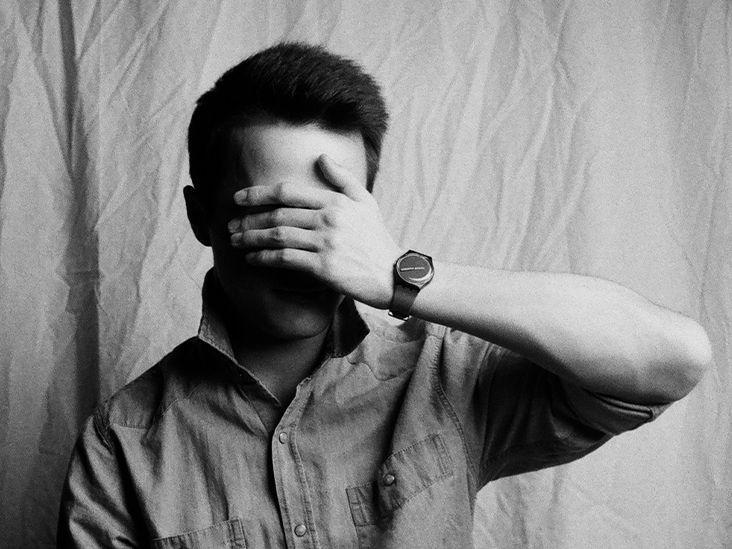
Coronavirus data
All data and statistics are based on publicly available data at the time of publication. Some information may be out of date. Visit our coronavirus hub for the most recent information on COVID-19.
Over a year has passed since SARS-CoV-2 began to spread across the world. Its appearance, which first caused mild concern, soon turned into serious worry as more people received a diagnosis of COVID-19.
In the beginning, scientists knew very little about this novel virus and the disease it caused. The unknowns and the virus’s remarkably rapid spread incited fear among health professionals, scientists, and the public.
Soon, restricted travel, lockdowns, mask mandates, and physical distancing protocols were implemented as a tactic to slow COVID-19’s spread. Widespread media coverage detailed every nuance of an ever-changing pandemic landscape as world leaders and health experts waged war on this invisible threat.
Worldwide, there have been over 150 million confirmed cases of COVID-19, with just over 3 million deaths attributed to the disease. According to official projections, in some countries, such as the United States, the rate of new SARS-CoV-2 infections is gradually declining.
This decrease is likely due to increased herd immunity and the introduction of vaccines. To date, approximately
As a result, some countries, such as the United Kingdom, are beginning to soften protocols initially put in place to stop the spread of the virus. As lockdowns lift, many people who were unable to leave their house are now going out and enjoying life as best they can while still being mindful of safety.
Yet, for some, going back out and mixing with other people is a concept filled with fear and anxiety. Despite vaccines and a decrease in disease prevalence, some people experience what scientists call COVID-19 anxiety syndrome.
Symptoms of this syndrome mimic those of other mental health conditions, including anxiety, post-traumatic stress disorder (PTSD), and obsessive-compulsive disorder (OCD). And, the pandemic and related factors appear to be the cause.
In this Special Feature, Medical News Today takes a closer look at this phenomenon, how it occurs, and what the latest research says. We also talked to environmental psychologist and well-being consultant Lee Chambers, M.Sc., M.B.Ps.S. Chambers shared his tips on how to manage this emerging mental health challenge.
Coronavirus resources
For more advice on COVID-19 prevention and treatment, visit our coronavirus hub.
At the beginning of the pandemic, most people were on high alert, experiencing fear and worry over the impact this virus may have. As scientists and health care professionals gained more understanding of the virus and how to treat the symptoms of COVID-19, society began to settle into a new and unfamiliar routine of living with a pandemic.
Throughout this global health emergency, reactions have varied widely. Some people refused to change their behavior, while others followed the rules strictly to avoid contracting the virus. However, on a larger scale, most people experienced a sudden disruption in their lives.
Disaster situations often have the same effect.
The International Federation of Red Cross and Red Crescent Societies classify a disaster as “a sudden, catastrophic event that severely disrupts the functioning of a community or society, causing human, material, economic, or environmental losses.”
A disaster can have far-reaching consequences on mental health. According to
These mental health consequences of a disaster also occurred with the COVID-19 pandemic. Statistics recorded by the
As more understanding of pandemic-related mental health consequences evolved, scientists identified an emerging group of anxiety-related symptoms and behaviors associated with the COVID-19 pandemic. They classify this phenomenon as COVID-19 anxiety syndrome.
Profs Ana Nikčević from Kingston University of London and Marcantonio Spada from London South Bank University, both in the U.K., developed the concept of COVID-19 anxiety syndrome.
In a paper that appears in
This syndrome manifests as the inability to leave the house because of COVID-19 fears, frequent checking for symptoms despite not being in a high-risk scenario, and avoiding social situations or people.
Investigators note that people with this syndrome tend to experience increased post-traumatic stress, general stress, anxiety, health anxiety, and suicidal ideation.
The researchers suggest that, in some people, the isolation, fear of contracting SARS-CoV-2, and uncertainty during the pandemic may have led to the collection of symptoms that make up this new syndrome.
They also speculate that the “Big 5” personality traits may play a role in its development. People with high neuroticism may have a higher chance of developing the syndrome. However, those with higher extraversion, conscientiousness, agreeableness, and openness may have a lower risk.
Additionally, people with OCD tendencies may also be more at risk, as COVID-19 concerns may amplify the condition.
MNT spoke with Lee Chambers — who is also the founder of Essentialise — about possible causes for this syndrome.
Chambers said:
“There is a normality to the fear of the pandemic, as the virus can be deadly. The challenge is whether we have developed a pattern of excessively safe behaviors that keep us anchored into the fears. I expect there to be pockets of people who, even when vaccinated, will be continually worrying about [COVID-19] and be avoidant of anything that may heighten their risk.”
He also noted that because research into COVID-19 anxiety syndrome is still at a very early stage, people need to consider a range of complex factors.
“Some of the potential reasons why [this may happen] include high levels of exposure to social media and news, disruption to routines and anchors caused by lockdowns and restrictions, and difficulties disengaging from the threatening stimuli, including [virus] variants and the situation in other countries,” Chambers explained.
According to a study that appears in Frontiers in Psychology, several other factors may play a role in whether a person is at risk for COVID-19 anxiety syndrome.
Here are some to consider.
Low tolerance to uncertainty
A person’s tolerance to uncertainty, perceived vulnerability to COVID-19, and tendency to worry excessively may contribute to this new phenomenon.
Research also suggests that people who have a natural inclination toward illness anxiety disorder (hypochondria) — a condition that causes a healthy person to believe they are sick — may also play a role.
Media coverage
COVID-19 has received extensive media coverage from news outlets and social media platforms. However, because SARS-CoV-2 is new, facts and information about how the virus develops change constantly. This may ultimately cause mistrust and anxiety among the public.
A plentiful amount of misinformation in social media, much of it negative, combined with politicians using the pandemic as leverage may also have contributed to the appearance of this syndrome.
The use of fear to promote compliance
The researchers also suggest that officials’ unintentional use of fear as a method to ensure compliance to safety precautions may have fostered feelings of anxiety and excessive worry in some people.
They argue that a better option to ensure compliance without causing unwanted anxiety is to promote efficacy and personal empowerment through knowledge.
To identify COVID-19 anxiety syndrome, Profs Nikčević and Spada have developed a new evaluation tool called the COVID-19 anxiety syndrome scale (C-19ASS).
This assessment tool may help people experiencing this form of anxiety access the support they need.
According to Chambers, there are many ways to cope with COVID-19 anxiety syndrome:
- Consider “actively seek[ing] out positive messages around improvements in the pandemic, the vaccine rollout,” and how the risk of death from the disease appears to be lessening due to new treatment options.
- Take things slow despite the expectation for a rapid return to normalcy. Step outside comfort zones at an individual pace while still practicing safety measures to “ease back into a place of harmony” gradually.
- Continued use of hand sanitizer and wearing disposable masks or gloves may help ease anxiety.
- Explain feelings of anxiety to a trusted person to build mutual understanding. This increases confidence and allows others to provide the support needed when venturing outside the home.
- Be mindful of social media and news reports that may trigger anxiety and focus attention on positive, trusted sources of information. Consider limiting exposure to media to perhaps, once a day.
“It can be easy to become frustrated because everyone is on their own journey as lockdowns ease, and some people are more comfortable than others. Being kind to ourselves and others is so important to keep ourselves from becoming fearful. A little patience with ourselves and understanding that we are all in a different place will fuel the respect and appreciation that we all have a shared human experience we are traveling through.”
– Lee Chambers
Additionally, people with COVID-19 anxiety syndrome can consider seeking the help of a mental health professional either through an in-office or teletherapy visit if that option is available.
Behavioral therapy or medications for treating anxiety or depression may also help those experiencing significant challenges associated with this new and evolving mental health syndrome.
For live updates on the latest developments regarding the novel coronavirus and COVID-19, click here.



